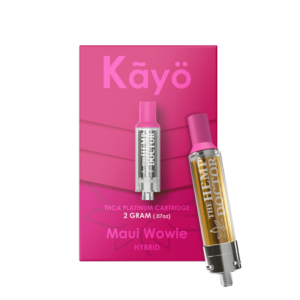With the growing demand for medical cannabis, many people in Minnesota are considering becoming legal medical growers. Navigating the process can seem daunting, but with the right guidance, it’s achievable. In this blog, we’ll break down each step in a simple and engaging manner, so you can confidently embark on this journey.
Understanding Minnesota’s Medical Cannabis Program
Before diving into the application process, it’s crucial to understand Minnesota’s medical cannabis program. This includes familiarizing yourself with the types of patients you’ll be serving and the specific conditions recognized under the program. The program was established with the aim of providing safe and effective medical cannabis to those suffering from qualifying conditions such as cancer, chronic pain, or PTSD. Knowing the target demographic not only helps in terms of compliance but also in tailoring your cultivation methods to meet patient needs more effectively.
The Minnesota medical cannabis program is regulated by the Office of Medical Cannabis, which oversees all aspects from licensing to product distribution. This office ensures that all cannabis produced meets stringent safety standards and is only used for approved medical purposes. As a prospective grower, staying updated with the latest guidelines and regulatory changes is paramount. Gaining insight into the state’s approach towards alternative forms of medication can greatly enhance your position in this sector.
It’s also significant to understand the legislative landscape. For example, the recent expansion in eligible conditions and an increased focus on patient education highlight opportunities to support the industry more comprehensively. This expansion offers a wider patient base and underscores the evolving nature of medical cannabis legislation in Minnesota. Throughout this journey, it’s important to keep your focus on patient care and delivery of high-quality medical cannabis.
Eligibility Criteria for Becoming a Medical Grower
To qualify as a legal medical grower in Minnesota, strict eligibility criteria must be met. This process is crucial in maintaining the integrity and safety of the medical cannabis industry. A comprehensive background check is one of the first steps, aimed at ensuring no disqualifying offenses or significant legal issues are present. Furthermore, applicants must demonstrate a basic understanding of cannabis cultivation, including knowledge of relevant agricultural practices and adherence to safety protocols.
Each applicant must provide comprehensive documentation, including proof of residence and a clean criminal record, particularly in relation to drug offenses. In some instances, additional verifications may be required to confirm eligibility for social equity provisions, specifically designed to support communities disproportionately affected by past cannabis prohibition. Understanding and fulfilling these eligibility requirements not only enhances your chances of successfully obtaining a license but also helps in creating a fair and equitable industry.
Moreover, knowledge about the other licenses involved in the supply chain, such as those for dispensaries or testing facilities, can be beneficial. This holistic understanding ensures you design your operations to align seamlessly with the entire Minnesota cannabis industry. Being aware of current cultivator licenses and their relevant restrictions is essential for informed decision-making and strategic growth planning within this dynamic market space.
Application Process: Steps and Required Documents
The application process to become a legal medical grower in Minnesota involves a series of detailed steps tailored to ensure quality and compliance with state regulations. Start by visiting the Minnesota Office of Cannabis Management’s website to access the necessary forms and guidelines. The application will require detailed personal and business information, including financial documentation that demonstrates your ability to operate sustainably and responsibly.
Compiling a comprehensive business plan is crucial. This document will detail your business model, including aspects such as cultivation techniques, product security, and employee training programs. In addition, your plan must outline projections for economic and social impact within Minnesota’s community. Your submission should reflect both your passion for the industry and your understanding of the complex regulatory environment surrounding medical cannabis cultivation.
Prepare to outline your cultivation methods comprehensively. This includes specifying your growing medium, lighting, and irrigation systems, and how you’ll manage pest control and nutrient delivery. These factors significantly affect the quality and consistency of your cannabis, which is crucial in a medical setting. Successfully navigating this documentation stage depends on clarity and a strong alignment with Minnesota’s cultivation standards.
Knowledge of Cultivation Standards and Practices
Understanding cultivation standards for medical cannabis is indispensable. Minnesota mandates specific guidelines that focus on sustainability and patient safety. Growers should be well-versed in organic farming practices, which emphasize reduced chemical usage and environmentally friendly techniques. Adopting these approaches not only ensures compliance but also enhances the therapeutic properties of the cannabis.
Investing in technology and innovative farming practices can help maintain consistency and quality in your produce. Techniques such as hydroponics or aeroponics can be beneficial, offering precise control over nutrients and environmental factors, leading to higher yields of safer cannabis. Learning these methods could significantly boost the efficacy of the medicinal products you produce. Attending workshops and accredited courses can further bolster your understanding of these advanced cultivation practices.
Ensuring the safety of your employees and patients is critical. Therefore, growers should implement robust quality control measures to assure the consistency and quality of the cannabis produced. Regular testing of the soil, water, and plants for contaminants supports health standards and aids in maintaining your standing within Minnesota’s tightly regulated environment. Techniques such as batch testing throughout different growth stages provide data to refine practices even further.
Staying Compliant with State Regulations
Compliance with evolving state regulations is a continuous responsibility for medical cannabis growers. Minnesota has a dynamic regulatory environment that responds to new legal and public health developments. Staying informed requires regular review of updates from regulatory bodies and active engagement with industry networks.
Retaining a compliance officer or consultant can be an effective way to manage regulatory changes and ensure your growing operation consistently adheres to new laws. These experts can help integrate compliance checks into your daily operations, ensuring any potential issues are identified and addressed promptly. They can also assist in preparing for inspections or audits, which are common in the cannabis industry to enforce adherence to state regulations.
Focusing on compliance extends to every aspect of operation, from packaging and labeling to patient data management and security protocols. Each element must meet the standards set by the Minnesota Department of Health and the Office of Medical Cannabis. Staying compliant not only protects your business from legal challenges but also reinforces your commitment to providing safe, high-quality medical cannabis to patients in need.
Embarking on Your Medical Growing Journey
Becoming a legal medical grower in Minnesota requires careful adherence to regulations and a commitment to patient care. By following these steps and staying informed, you’ll be well on your way to contributing to the medical cannabis community with professionalism and dedication.







